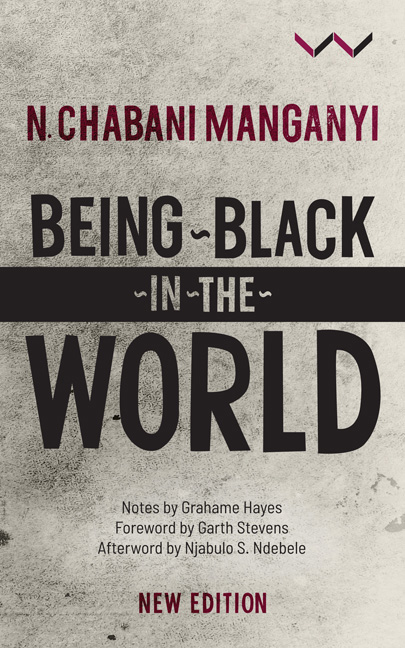6 - Reflections of a Black Clinician
Published online by Cambridge University Press: 25 October 2019
Summary
This essay is in three parts. The first section deals with the body boundary experiences of a group of hospitalised African paraplegics and normal subjects. This part of the essay is an expanded revised version of a paper published in 1972 (Manganyi, 1972a). The second part of the essay deals with neurotic disorders and problems of psychotherapy (treatment). The third part considers the community mental health approach.
Reflections on the Body
The body image concept was first introduced into the literature mainly as a result of the contribution in the sixteenth century of the French physician-surgeon, Ambroise Pare, who had interested himself in phantom limb phenomena in amputees (Kolb, 1959). Benton (1959) elects Pierre Bonnier as the first worker to develop the concept of an organised perceptual model of the body. Since then, this concept has been defined and developed notably by Gertsmann (1958) and Schilder (1964).
In the most general terms, the body image may be described as an individual's internalised conception, experience and image of his physical self. Much later in the study of the body image, it became apparent that the experience of the body could be studied on the basis of its boundary (peripheral) characteristics (Fisher and Cleveland, 1968a). Workers in this latter mould conceive of the body as having boundary features which may be penetrable or non-penetrable. These boundary features are to be understood as relating to the distancing of stimuli in relation to the body. It was not long before these workers demonstrated the fact that body boundary characteristics were related to certain personality constellations and adjustment strategies.
Of more immediate concern was the recognition by several workers that the body image and its boundary features were extremely sensitive to early socialisation experiences (see, for example, Kolb, 1959; Witkin et al., 1962; Fisher and Cleveland, 1968a). From this observation, it is not a long step to conclude that since socialisation experiences are culturally determined, such differences should account for some measure of difference in the development of body boundary features in different cultural settings. In recognition of this possibility, the present writer became interested in the probable influence of these pathoplastic factors (cultural) in the form assumed by body image disorders in an African group of subjects. This interest was expressed through the formulation of two research hypotheses.
- Type
- Chapter
- Information
- Being Black in the World , pp. 65 - 86Publisher: Wits University PressPrint publication year: 2019

